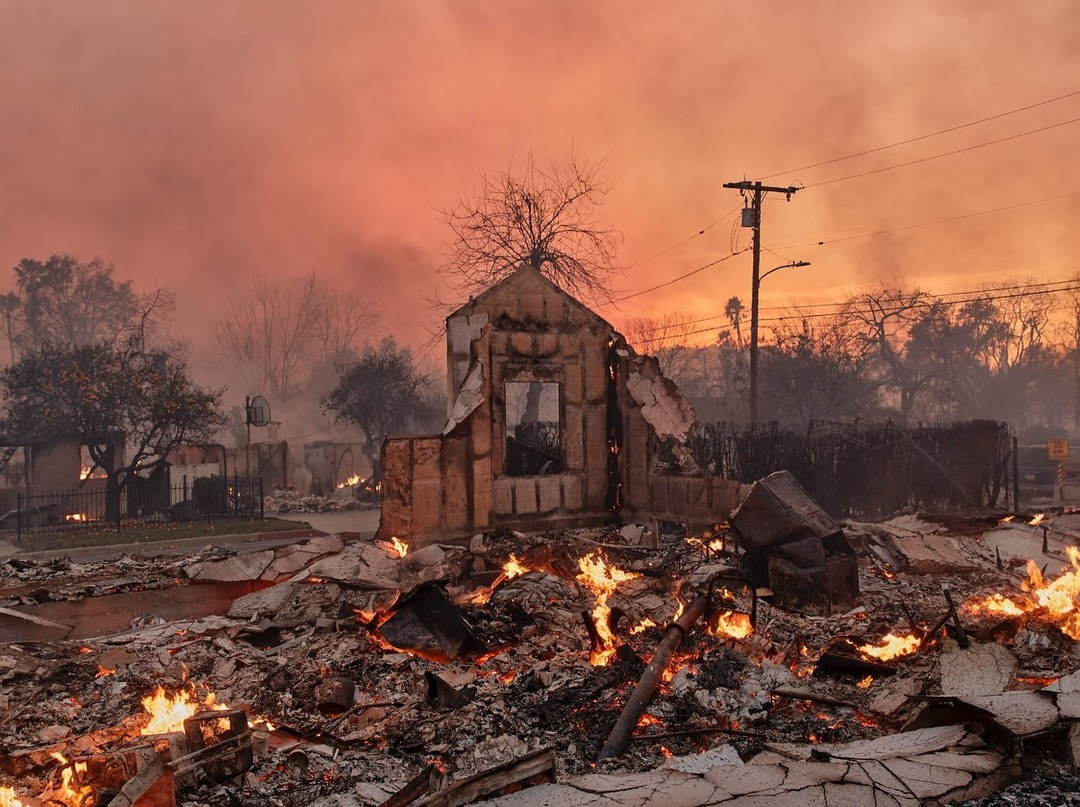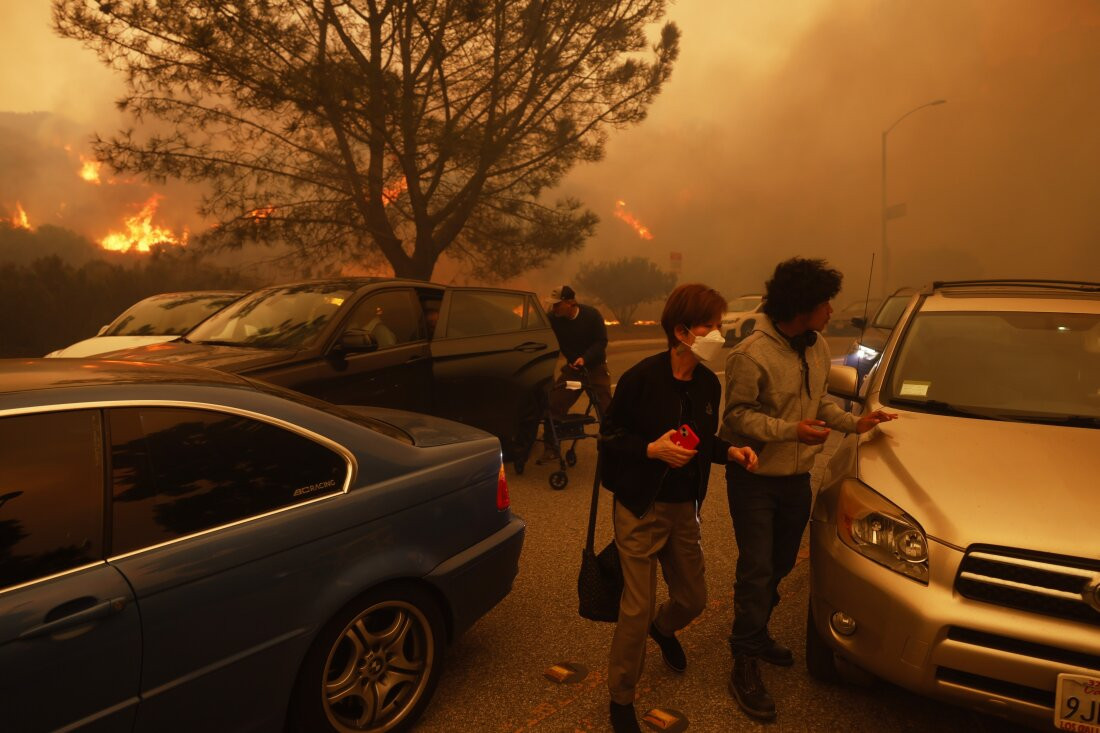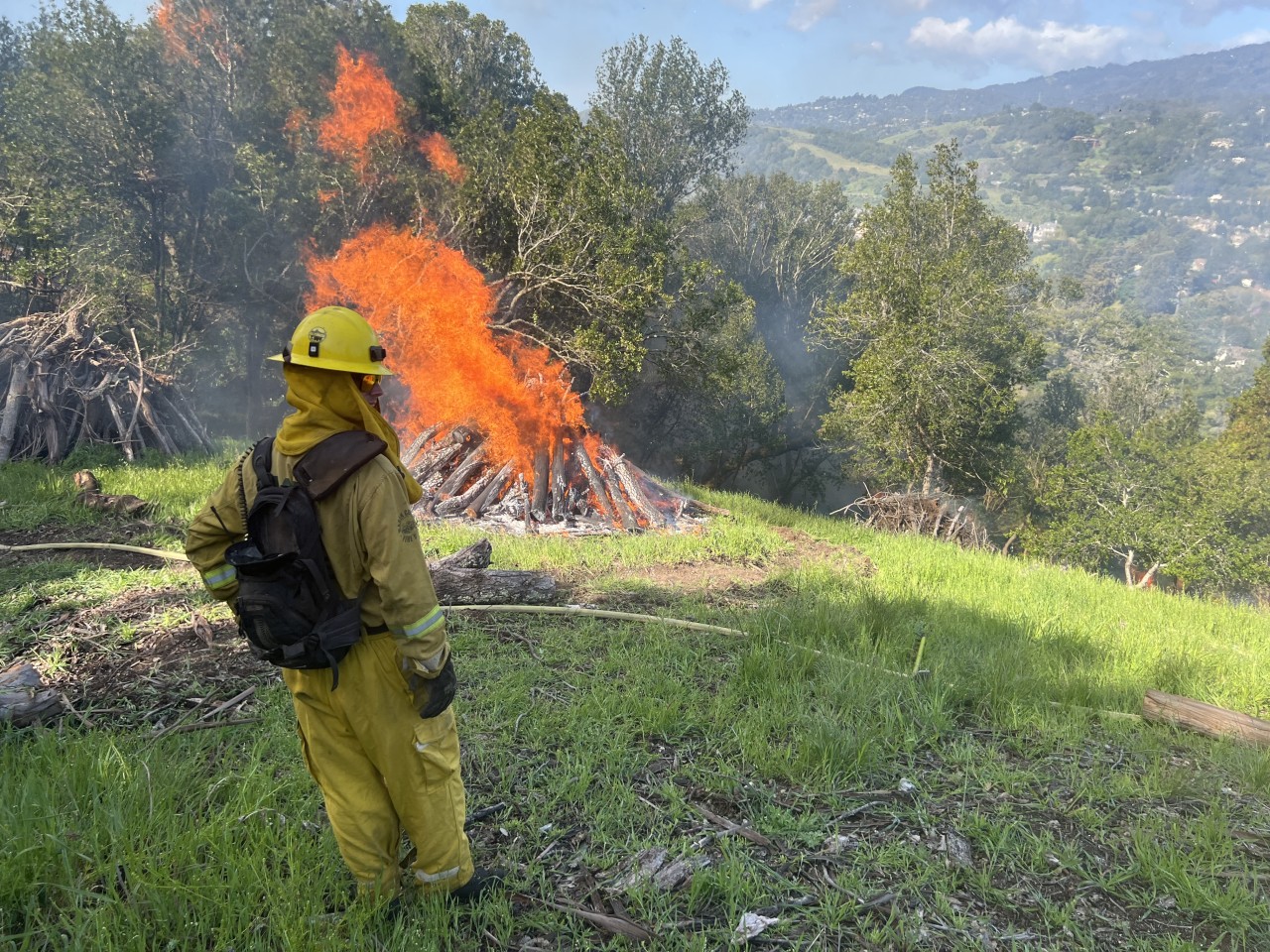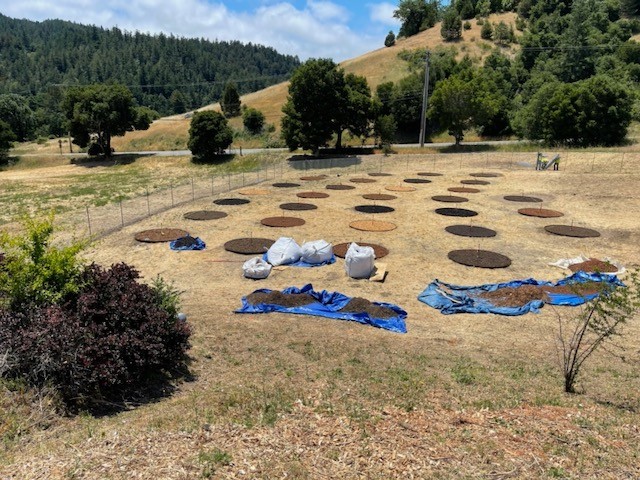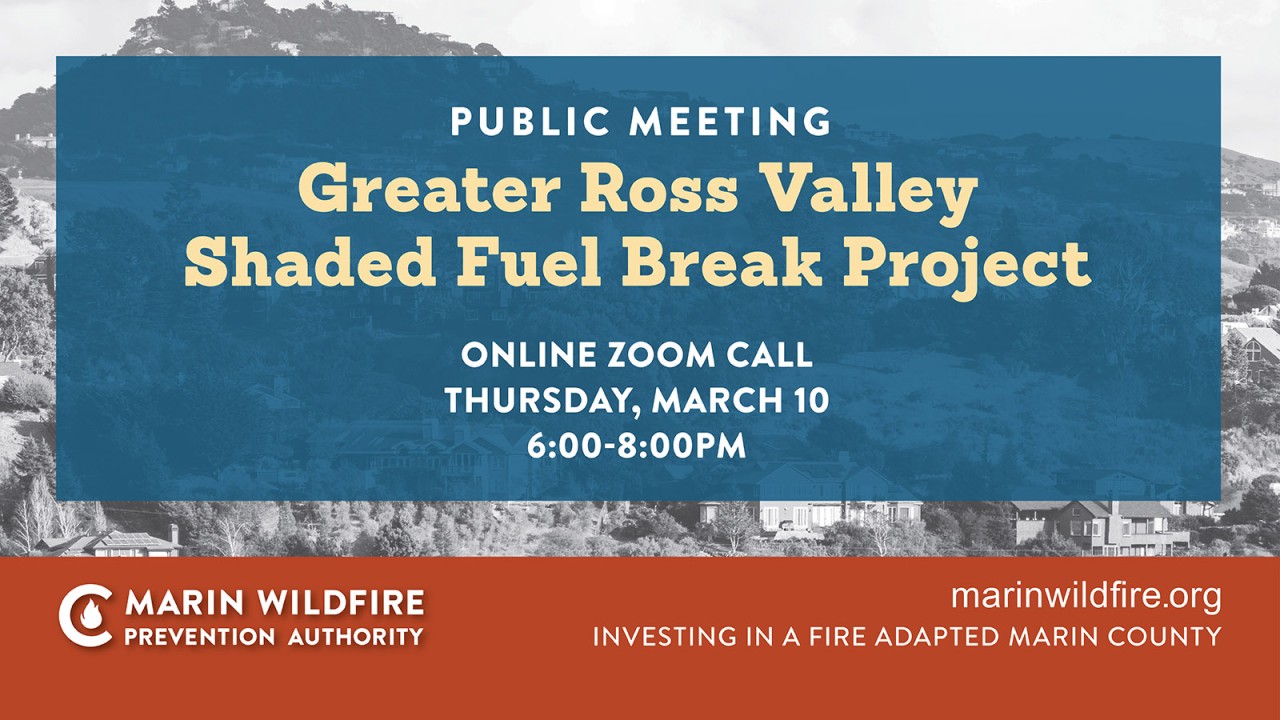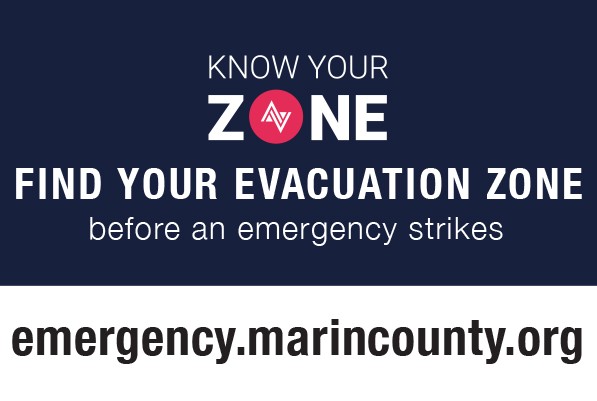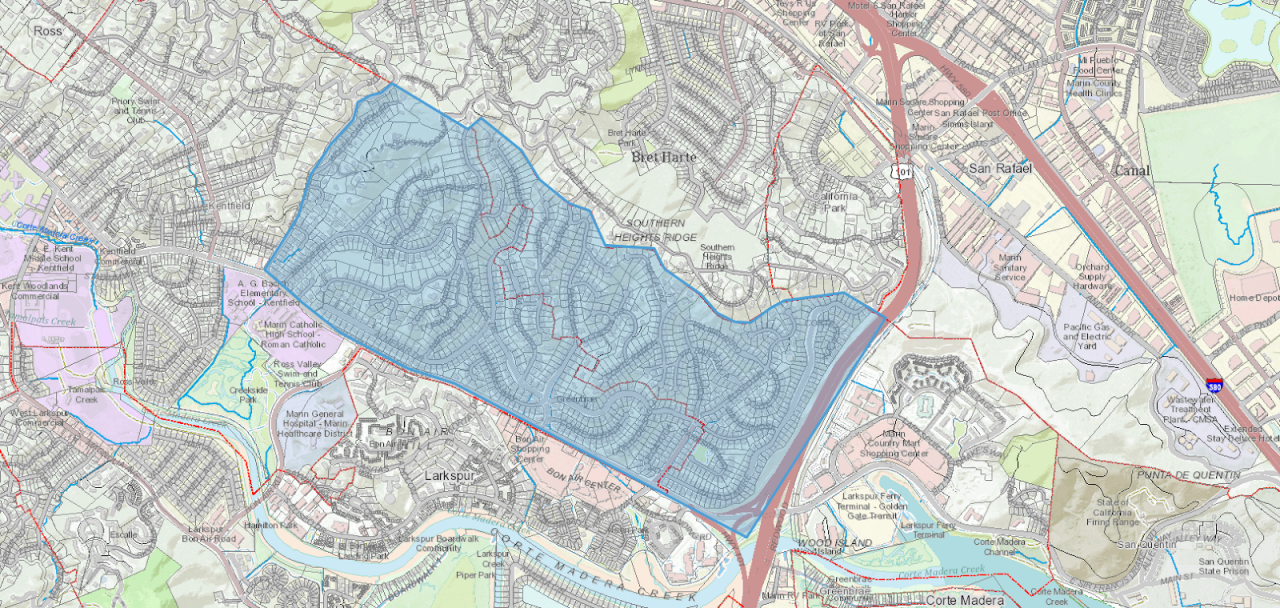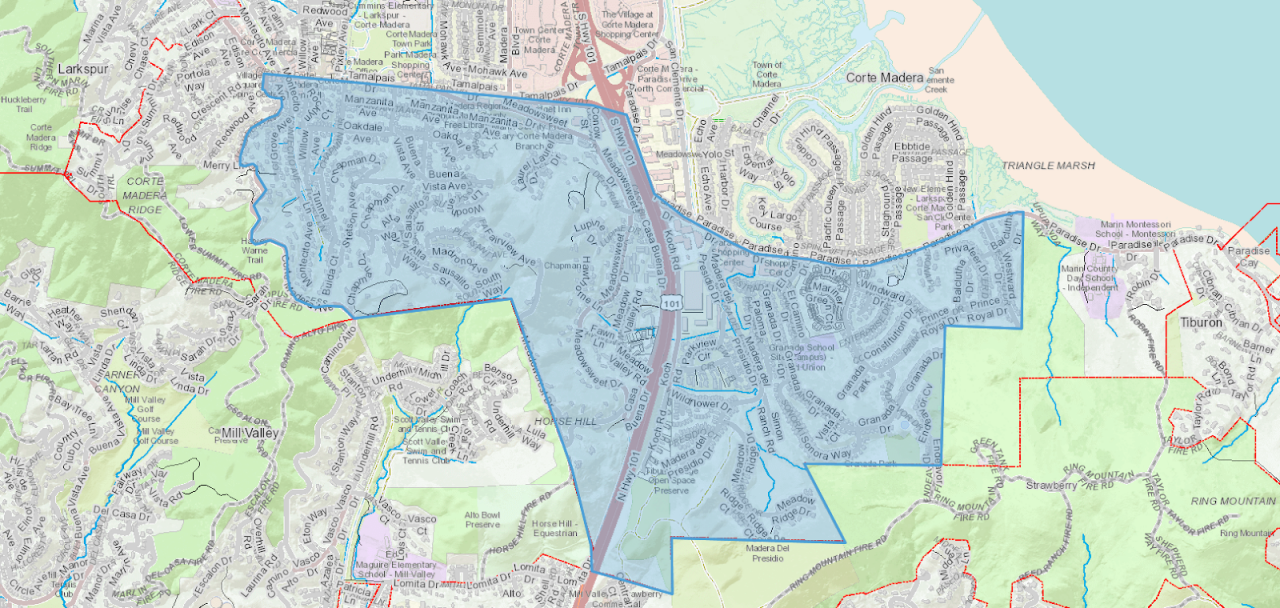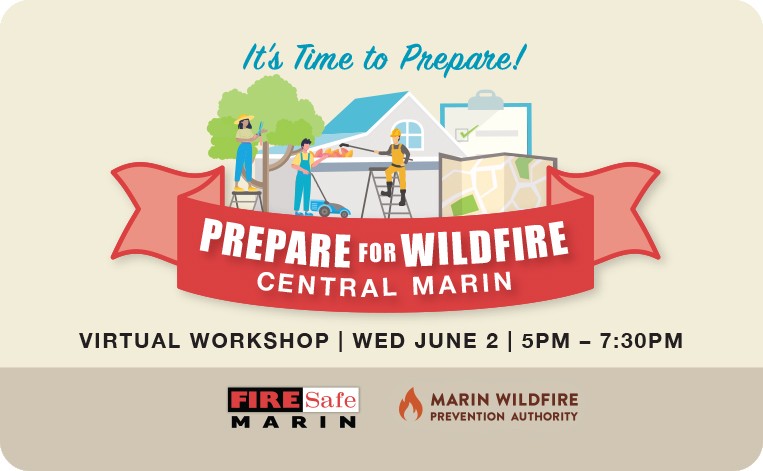Wildfire Risk Home Evaluations Are Underway in Your Neighborhood
Central Marin Fire Department and the Marin Wildfire Prevention Authority (MWPA) are working together to reduce wildfire risk across Central Marin. As part of this effort, trained inspectors will conduct Defensible Space and Home Hardening Evaluations throughout Larkspur and Corte Madera. These evaluations are authorized by the Fire Chief and are part of a countywide program funded by Measure C (2020) to help communities prepare for wildfire.
This free program identifies specific steps that homeowners can take to reduce vegetation hazards and harden structures against ember intrusion, radiant heat, and direct flame contact. The inspection process follows local Fire Code ordinances and guidelines provided by California Public Resources Code 4291.
If you are not home during the inspection, inspectors will only assess areas visible from the public right-of-way—typically from the street or driveway to the front door. Inspectors cannot enter gates, access backyards, or walk around structures without your explicit permission. To authorize a full-property evaluation, you may log in and sign a Right of Entry (ROE) form online in advance of your scheduled inspection.
To provide ROE authorization in advance or review past evaluations, visit www.defensiblespacereport.org/marin.
Upcoming Neighborhood Inspection Schedule (2025)
- Week of June 2 – Meadowsweet neighborhood, Corte Madera
- Week of May 19 – Baltimore Canyon & Sycamore Canyon (aka Madrone Canyon & Blue Rock), Larkspur
Week of April 7 – Chapman Park, Corte MaderaWeek of March 31 – Marina Vista, Larkspur & Christmas Tree Hill, Corte MaderaWeek of March 24 – Palm Hill, Corte MaderaWeek of March 3 – Madera Gardens, Corte Madera
Your Wildfire Risk Report
Approximately 24 hours after your inspection, you will receive a customized Wildfire Risk Report with clear, actionable steps to reduce your home’s wildfire risk. Some items may be required by law, while others are strong recommendations based on your property’s conditions. All property owners are required to maintain defensible space year-round—please don’t wait for an inspection to begin this critical work.
